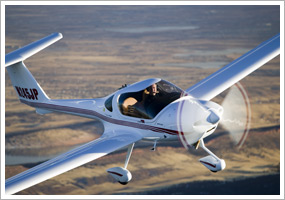Custom content for the Sept. 23, 2011, issue of 'AOPA ePilot' newsletter
| The following stories from the Sept. 23, 2011, edition of AOPA ePilot were provided to AOPA members who expressed an interest in the particular subject areas. Any AOPA member can receive information tailored to their areas of interest by updating their preferences online. |
training tipsSelf-supervised solos Flight instructors may look at the same training program a little differently. Probably that first solo will still be there as a highlight. But another occasion likely to come in for honorable mention is when the instructor authorized you to solo when you were not under direct supervision. Unsupervised solos are an important stage for several reasons. It’s an obvious vote of confidence attesting that you will make careful, responsible choices about selecting your opportunities to make solo flights, and complying with limitations entered into your logbook for those flights. This occasion should be a major boost to your morale! Your ability to make unsupervised solos also adds flexibility to your training program. If your schedules are temporarily out of whack, making it difficult to set up some dual instruction sessions, you can still get out there and practice—avoiding prolonged delays that have a tendency to extend and set back training. Your instructor may now endorse your logbook for flight to an airport within 25 nautical miles of the airport where you normally train, for practicing landings and takeoffs, as prescribed by regulations. This would be a good time to review all regulations about solo flight. Also check the date of the required 90-day solo endorsement, noting that it must pertain to the specific make and model aircraft you will fly. Once you have earned this added freedom to fly solo, put the privilege to good use by planning practice goals for your flights that make best use of the time aloft. After each unsupervised solo flight, think about the “takeaways” you have gleaned from the experience. Do they confirm your understanding of a flight principle, procedure, or technique? Do they send you back to the books? There’s really no such thing as an unsupervised solo. Better, perhaps, to call it a self-supervised solo—another example of the supervisory skills discussed in the Sept. 16 Training Tip that you are learning as part of the overall process of assuming the responsibilities of a pilot in command.training productsSporty’s Plates aviation app for iPadImagine carrying all U.S. terminal procedures and taxiway diagrams with you on every flight. That’s what you can do with the Sporty’s Plates app for the iPad. The app lets you search by airport identifier, approach type, or approach name. You can view by grid or list, and print charts if you need them. They’re considered a legal replacement for paper charts for FAR Part 91 flying. A year’s subscription is $49.95; you can try the app 30 days at no charge. Order online.
Note: Products listed have not been evaluated by ePilot editors unless otherwise noted. AOPA assumes no responsibility for products or services listed or for claims or actions by manufacturers or vendors. final exam
Question: As we head into autumn and the sun begins to set earlier, I was thinking once again about flying more at night. Can you clarify what is considered “night” by the regulations?
Answer: According to FAR 1.1, “night” means the time between the end of evening civil twilight and the beginning of morning civil twilight, as published in the American Air Almanac, converted to local time. However, to meet the night takeoff and landing experience requirement in FAR 61.57(b), “night” is defined as the period of time beginning one hour after sunset and ending one hour before sunrise. For more information on flying at night, see AOPA’s subject report on night flying, as well as this Flight Training article.
Got a question for our technical services staff? E-mail [email protected] or call the Pilot Information Center, 800/872-2672. Don’t forget the online archive of “Final Exam” questions and answers, searchable by keyword or topic. |
 Ask any number of newly certificated private pilots to identify the high points of their training. It’s certain that all will mention their first solo and the day they passed their checkride. Few other milestones match those moments.
Ask any number of newly certificated private pilots to identify the high points of their training. It’s certain that all will mention their first solo and the day they passed their checkride. Few other milestones match those moments.

